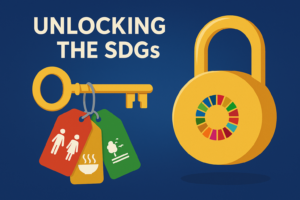Latin America leads the issuance of blue bonds, with Panama exchange Latinex expected to list its first regional blue bond this year. But more work on standards and guidance is needed to drive further issuance in the region
At a glance
- Latin America will lead blue bond issuance this year after the region issued nearly half of global blue bonds in 2023
- Though on the rise, blue bonds face issuance barriers and still represent a small fraction of the total global sustainable bond market
- Clearer guidance and principles, as well as improved understanding about ocean ecosystems, could encourage investment and expand the scope of blue bond projects
In the nascent asset class of blue bonds, where proceeds are typically earmarked for ocean-friendly projects and critical clean water resources protection, Latin America stands out.
Last year, it was the biggest market for blue bonds, accounting for almost half (49.1 per cent) of total issuance, according to S&P Global data. The $2bn-worth of blue bonds issued in the region last year were mainly in the sanitation sector. This year will see Panama’s stock exchange, Latinex, list its first blue bond.
Elizabeth Beall, managing director at Finance Earth, says Latinex’s plans for a regional blue bond stem from the recognition that there is a need for more regional co-operation and shared initiatives.
Approximately 60 per cent of all blue bonds were issued last year, according to S&P Global, with total issuance in 2023 reaching $6.8bn. But blue bonds are still a tiny fraction — just 0.2 per cent — of overall global green, social, sustainable and sustainability-linked bond issuances. Total GSSSB issuance in Latin America is projected to reach between $45bn and $55bn this year, according to S&P Global, after reaching a record high of $55bn in 2023. Countries such as Brazil, Chile and Mexico are expected to remain the region’s leaders in terms of issuance.
Why are blue bonds so popular in Latin America?
Janine Dow, head of LatAm at Sustainable Fitch, says the transition required from polluting industries, together with increasing recognition about the region’s deep ecological characteristics, is driving the issuance of green bonds, and subsequently blue bonds.
Latin America has a coastline that extends over 70,000km, and with 25 per cent of its population and 100 per cent of the Caribbean’s living on the coast, the blue economy, which the World Bank defines as the sustainable use of ocean resources for economic growth, is seen as essential for sustainable business in the region.
“There is a preoccupation with protecting and looking after the region’s biodiversity which is reflected in various national taxonomies, like Colombia’s and Mexico’s,” says Dow. “There is very much a focus on, ‘why are we doing this, why do we care about these labelled bonds, green or blue?’”
Yet since 2018, when the world’s first sovereign blue bond was issued by the Seychelles, challenges such as standardisation and ensuring funds are used for eligible purposes have remained a barrier to growth.
Analysts say clear and quantifiable metrics are needed to assess the effectiveness of blue bonds, as well as improved understanding and adequate taxonomies.
“Investors like to have a menu of eligible projects that [they can] pick from quite clearly and then say, ‘This is aligned, this is clearly eligible’,” says Dow. “We don’t have that at the moment.”
Written by Aliya Shibli











